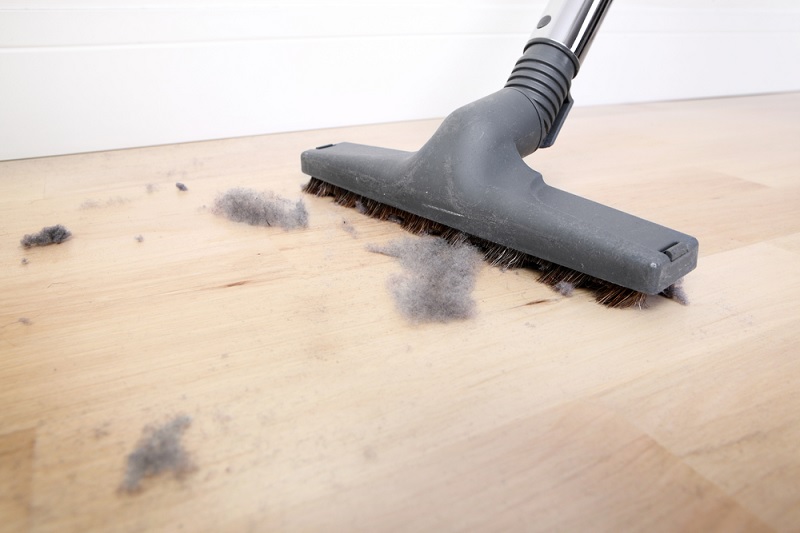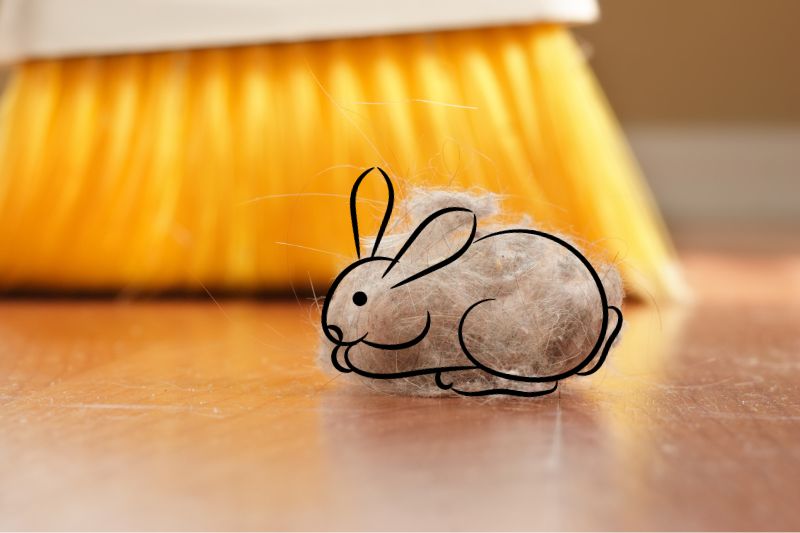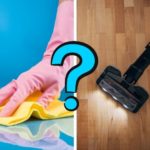A little dust bunny bobbing about your home – we’ll name him Thumper – what could possibly be wrong with that? He’s always quiet, never makes much fuss, and seems to be growing happily!
But hang on. Something isn’t quite right! Thumper seems too good to be true.
Unfortunately, Thumper isn’t the cute, friendly bunny you think he is. In fact, he’s a trespasser, a dust bunny that could be doing more harm than good in your home.
Thumper’s riddled with dust mites, plagued by hair, pollen, dust particles, and so much more.
Sadly, he’s not the kind of visitor that you want in your abode! Especially if you or someone in your family has allergies!
You need to eradicate Thumper from your house immediately. Find out how you throw Thumper the dust bunny out of your home below.
What Are Dust Bunnies?
Dust bunnies aren’t cute carrot-chewing creatures at all. They’re actually a mixture of various types of dirt and debris found around the home that come together to create a grey fluffy mound, which is held together by static electricity.
To start off with, you get a tiny mat of fuzziness (which doesn’t look too bad), but over time, one bunch of dust mingles with another, and the mound grows in size.
Before you know it, you’ve got an extra-large bunny on a rampage in your house, and loads of small bunnies are strewn about the place.
If you don’t manage the dust bunnies, they can get out of control quickly, multiply at speed, and grow in size.
In addition, dust bunnies can be riddled with dust mites, obstruct the airflow of objects, particularly electronics (which reduces their lifespan), and even clog vents.
As a consequence of the above, those who live in a home with lots of dust bunnies can suffer from allergic reactions, sneezing, and runny eyes, as well as other respiratory issues.
This is why it’s crucial to get rid of the bunnies before they cause chaos.
Dust bunnies are mainly made from:
- Hair (animal and human variety)
- Lint
- Cobwebs
- Dust particles
- General debris
- Dead skin
- Pollen
- Dander

Why Are Dust Bunnies Called Dust Bunnies?
The most likely explanations are that the clumps of fluff are grey in colour, so they look like rabbits.
The fuzzy mounds are also shaped like bunnies in lots of cases. Plus, the piles of grime multiply really quickly, just like rabbits!
Where Do You Find Dust Bunnies?
Okay, so now you know what dust bunnies are and what problems they can unleash on your home, you need to get rid of them.
But just before you can remove the bunnies from your house, you need to know where they’re likely to be burrowing – I mean living!
Here are the most common spots:
- Under sofas, tables, and chairs.
- Around (behind in particular) large items of furniture like cabinets and wall units.
- Behind large appliances like fridges, freezers, washing machines, and dryers.
- Under the bed, bedside cabinet, and back of the bed.
- In the corners of rooms.
- Dust bunnies appear in areas that aren’t cleaned as much, which is why they’re often found behind or under furniture and appliances.
- In any nooks and crannies with folds or hidden spots, like on curtains and lampshades.

How to Get Rid of Dust Bunnies
Now you know where the dust bunnies are likely to be lurking, you can get stuck in and remove them from your house! What’s the easiest way to get rid of dust bunnies? Clean them away.
Check out these tips:
- Hoover your home with a vacuum cleaner with a HEPA filter fitted – the filter will catch all the loose dust particles in the air.
- Move furniture out and clean behind each piece. Don’t settle for cleaning around the items. You’ve got to get stuck in and do a proper job!
- Use all the attachments that come with your vacuum cleaner. Don’t just hoover and hope for the best. Get all your vacuum cleaner’s tools out and use them. Grab the crevice tool when cleaning out tight spots and attach the upholstery nozzle when vacuuming softer furnishings.
- For areas that can’t get wet, grab some microfibre cloths and wipe the dust bunnies off the surfaces.
- Call a professional cleaner out if you’re struggling to contain the bunnies. They can help you with the task.
- Deep clean your soft furnishings and items, like blankets, cushions, and rugs, in the washing machine or by hand. This will help to control the level of dust, everyday grime, and pollen in your house.
- Stay on top of the housework to keep the bunnies at bay.
- If you think the bunnies are multiplying quicker than you can handle them, consider changing a few furnishings and surfaces in your home (this is especially true for those with allergies). For example, get some wooden blinds to replace the dusty curtains that are hanging up, or replace a carpeted surface with a hard floor so you can sweep it quickly. Some surfaces are easier to clean than others. Plus, some surfaces hold more grime than others.
Are Dust Bunnies Harmful?
As mentioned above, dust bunnies can be filled with different types of dirt, as well as mites, so they can be harmful.
The bunnies can give rise to allergic reactions, sneezing, and wheezing and can trigger asthma and other respiratory-related issues.
You also have to make sure that dust bunnies don’t clog up vents and electronics because this can lead to gadgets overheating. This can cause them to malfunction, overheat and catch fire.
It’s worth pointing out that dust bunnies are also a fire hazard! Which is even more of a reason why you should clean them away, especially from areas that are likely to heat up or are near a spark!

Bethan has a passion for exploring, reading, cooking and gardening! When she’s not creating culinary delights for her family, she’s concocting potions to keep her house clean!

